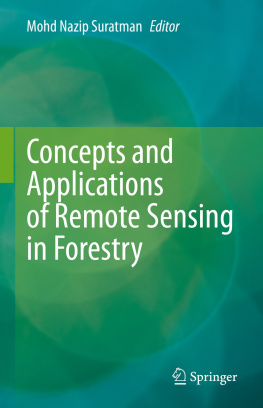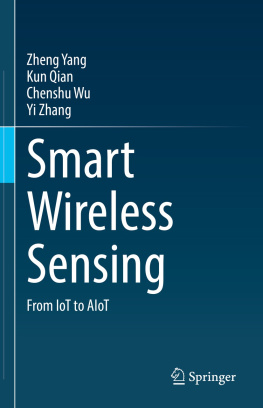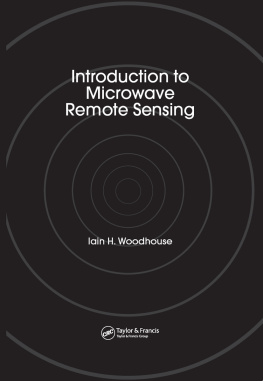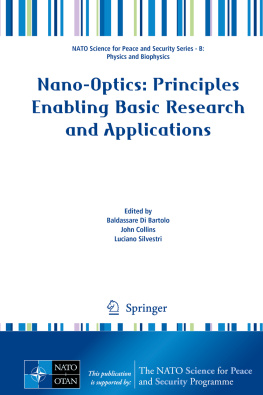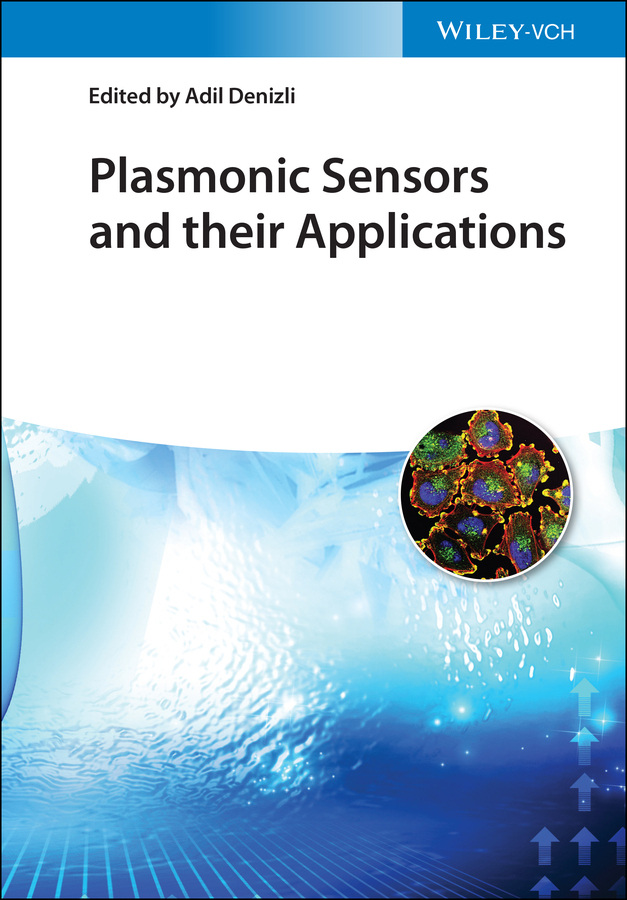
Table of Contents
List of Tables
- Chapter 4
- Chapter 5
- Chapter 9
List of Illustrations
- Chapter 1
- Chapter 2
- Chapter 3
- Chapter 4
- Chapter 5
- Chapter 6
- Chapter 7
- Chapter 8
- Chapter 9
- Chapter 10
- Chapter 11
- Chapter 12
- Chapter 13
Guide
Pages
Plasmonic Sensors and their Applications
Edited by
Adil Denizli

Editor
Adil Denizli
Department of Chemistry
Hacettepe University
Ankara
Turkey
Cover
Cover Design: Wiley
Cover Image: Creations/Shutterstock
All books published by WILEYVCH are carefully produced. Nevertheless, authors, editors, and publisher do not warrant the information contained in these books, including this book, to be free of errors. Readers are advised to keep in mind that statements, data, illustrations, procedural details or other items may inadvertently be inaccurate.
Library of Congress Card No.: applied for
British Library CataloguinginPublication Data
A catalogue record for this book is available from the British Library.
Bibliographic information published by the Deutsche Nationalbibliothek
The Deutsche Nationalbibliothek lists this publication in the Deutsche Nationalbibliografie; detailed bibliographic data are available on the Internet at .
2021 WILEYVCH GmbH, Boschstr. 12, 69469 Weinheim, Germany
All rights reserved (including those of translation into other languages). No part of this book may be reproduced in any form by photoprinting, microfilm, or any other means nor transmitted or translated into a machine language without written permission from the publishers. Registered names, trademarks, etc. used in this book, even when not specifically marked as such, are not to be considered unprotected by law.
Print ISBN: 9783527348473
ePDF ISBN: 9783527830336
ePub ISBN: 9783527830350
oBook ISBN: 9783527830343
Preface
I welcome the publication of this book titled Plasmonic Sensors and Their Applications. In recent years, plasmonic sensors have been employed for various applications from medical diagnosis, environmental monitoring, pharmaceutical analysis, food quality detection to defense, and security fields. The development and progress of the plasmonic sensors cover chemistry, physics, material science, nanotechnology, and engineering. A huge body of information on plasmonic sensors and applications is already existed and continuing to create more reliable, selective, sensitive, and lowcost sensors for a variety of applications although a complicated and timeconsuming production procedure.
This book contains 13 chapters, which contain plasmonic sensors prepared by different methods and used for various applications. In the first chapter, following the mention of the fundamentals of plasmonic sensors, new trends in plasmonic sensors for the applications in disease diagnosis are extensively reviewed with future perspectives. In .
I believe this book provides an overview and highlights some of the recent research including the extensively studied topics. I would like to deeply thank WILEYVCH and all the contributors to the generation of this book possible. I hope this book will reach a broad range of readers.
Prof. Dr. Adil Denizli
Editor
Ankara, Turkey, 2021
Deciphering Plasmonic Modality to Address Challenges in Disease Diagnostics
Esma Derin1,2, zgecan Erdem1, and Fatih Inci1,2
1UNAMNational Nanotechnology Research Center, Bilkent University, Ankara, Turkey
2Institute of Materials Science and Nanotechnology, Bilkent University, Ankara, Turkey
1.1 Introduction
Recent advances in health technologies have remarkable impact on healthcare system. Advanced health technologies are however not affordable and available for resourceconstraint settings. From global health perspective, recent improvements in health technologies need to reflect alternative solutions for overcoming such inequalities by developing new technologies and strategies in the manners of costeffective, rapid, easytouse, and portable size, hereby minimizing the disparities between resourcerich and limited settings [.
The history of SPP modality takes back more than a century, however, the improvements in the field have not accelerated until notable leaps in the nanotechnology (e.g. nanoscale fabrication techniques) to achieve appropriate sized structures for the further discoveries .
1.2 Surface Plasmon Polaritons
SP is the propagating light waves at the conductor surface via trapping due to interactions with free electrons .
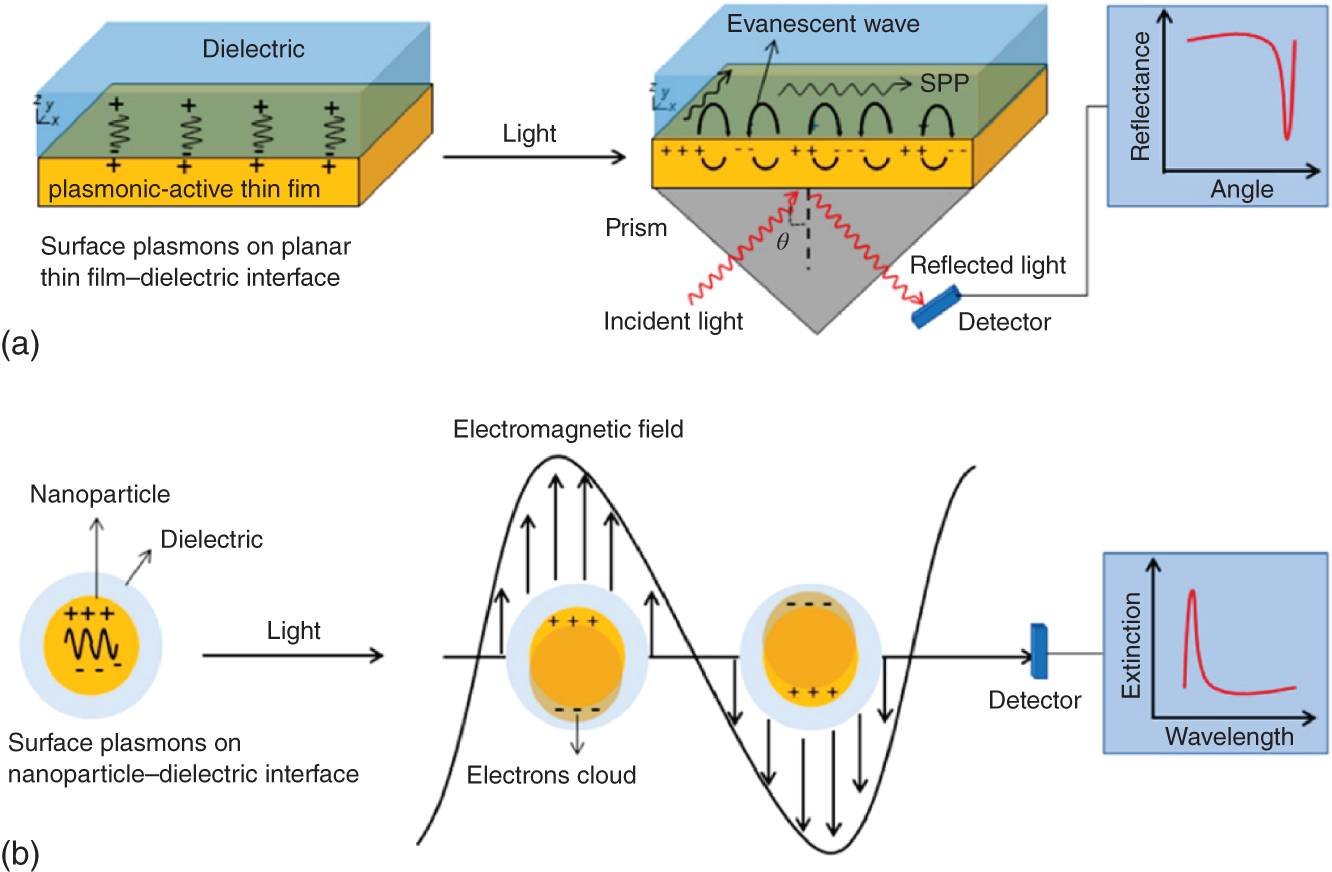
(a) SPP propagation is illustrated through thin film with the surface charges at the metal and dielectric interface with the excitation, and the spectra is obtained after surface plasmon excitation. (b) SPP is generated through nanoparticle surface to achieve localized surface plasmon resonance (LSPR), and the spectra is obtained after surface plasmon excitation.
Source: Reprinted with permission from Bhattarai et al.. MDPI.
The characteristics of the SP modes, which can be either localized SPs of individual particles or several propagating SPPs on flat and curved, single and multiple surfaces, are determined by the topology of the metal surface. In addition, SPP modes of complex particle arrays and metal nanostructures are also determined. Based on this unique property of the SPPbased waveguides, the bandwidth of information can be transported by plasmonic waveguides through conventional (dielectricbased) photonics. The interest in plasmonbased nanophotonics is increased substantially .
1.2.1 Excitation of the SPP
The excitation of the surface plasmon is mostly related to the conservation of the energy and momentum of photon in the incident light on a metaldielectric interface. The excitation of the SPPs requires the momentum and energy matching to the incident photon's and plasmon modes in order to obtain chargecoupled oscillations .
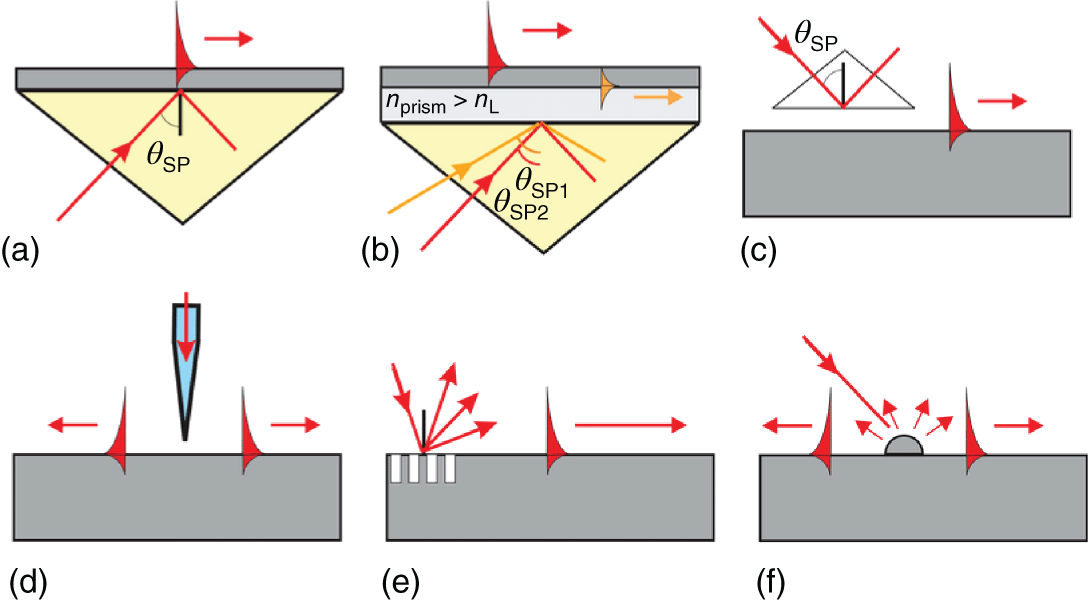
The common configuration of SPP excitations is depicted. (a) Kretschmann configuration, (b) twolayer Kretschmann configuration, (c) Otto configuration, (d) excitation with an SNOM probe, (e) grating diffraction, and (f) diffraction on surface features.
Source: Reprinted with permission from Zayats et al.. 2005, Elsevier.
Effective plasmon generation is achieved with the optical coupling element integration into the system. Prism, grating, and waveguide coupling methods (.
1.3 Surface Plasmon Resonance (SPR)
SPR is an optical biosensor that relies on the refractive index change of sensor surface, denoting labelfree and in realtime detection [.
SPP or SP is the main requirement to induce SPR in the interface between the metal (e.g. gold or silver) and dielectric materials based on light excitation . These indicated metals have both pros and cons; for instance, the negative real dielectric constant of silver is the largest, which creates higher sensitivity against to refractive index (RI) changes. However, its chemical stability is lower due to easy oxidation in air. In contrast to silver, RI sensitivity of gold is lower, yet it holds higher stability and chemical versatility, and hence, the functionalization of the sensor surface can be carried out much easier.
Next page

